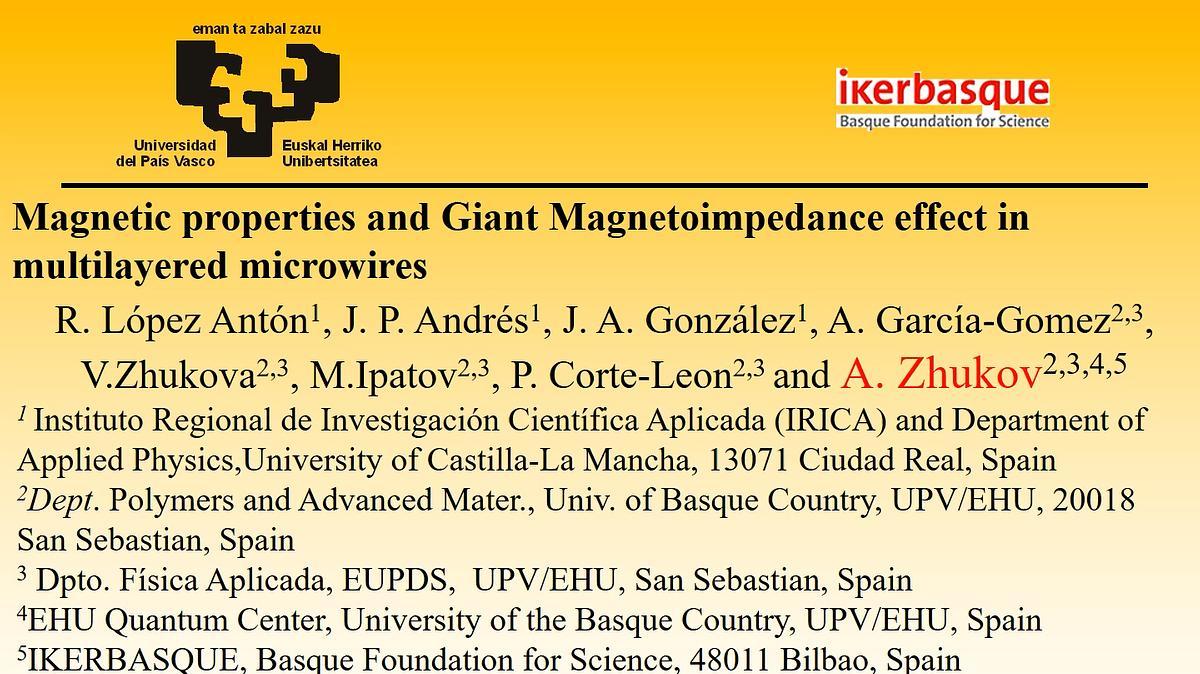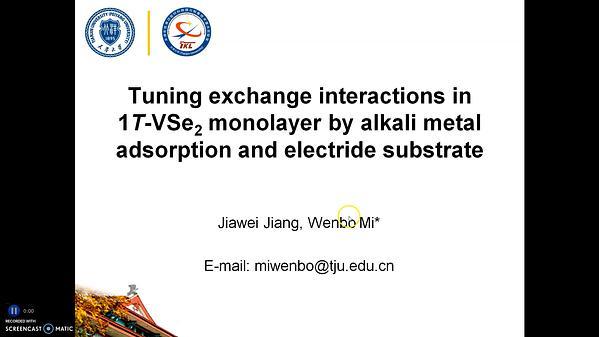
Premium content
Access to this content requires a subscription. You must be a premium user to view this content.

technical paper
Magnetic properties and giant magnetoimpedance effect in multilayered microwires
Studies of Giant Magnetoimpedance (GMI) effect have attracted considerable attention considering various technological applications 1,2. Up to now, most attention has been paid to the achievement of the highest GMI as well as to tailoring of the magnetic field dependence of GMI effect through the modification of the magnetic anisotropy of the magnetic materials. Generally, the magnetic anisotropy of amorphous materials can be controlled by the magnetostriction coefficient (that to great extend is linked to the chemical composition of material) or by special thermal treatment (including magnetic field or stress-annealing) 2,3. Most of studies of GMI effect are performed in different families of magnetic wires 1-3.
Recently, a new approach allowing to tune the magnetic anisotropy of magnetic wires by depositing of magnetic and non-magnetic layers onto the glass-coating 4.
Accordingly, the purpose of this paper is to study the GMI effect in amorphous Co-rich microwires with Co- layers deposited onto glass-coating.
Studies of magnetic properties and GMI effect of as-prepared amorphous Fe3.6Co69.2Ni1B12.5Si11Mo1.5C1.2 and of the same microwires with deposited Co-layer microwires reveals that both samples present soft magnetic properties and high GMI effect. Low field hysteresis loops of both samples are rather similar, while the contribution of Co-layer is observed in hysteresis loop measured at higher magnetic field (see Figs 1a,b). Such character of hysteresis loop is similar to those observed in microwires with mixed amorphous- crystalline structure 5. However, the GMI ratio, ΔZ/Z and magnetic field, H, dependences of GMI effect are affected by the Co-layer (see Fig.2). In particularly, higher GMI ratio and sharper peaks on ΔZ/Z (H) dependencies.
We discussed observed experimental dependences considering both change of the internal stresses originated by the Co-layer as well as the magnetostatic interaction between the amorphous ferromagnetic nucleus and deposited Co Layer.
References:
1 T. Uchiyama, K. Mohri, and Sh. Nakayama, IEEE Trans. Magn., 47, No 10 (2011) pp. 3070-3073
2 F.Qin, H.-X. Peng, Prog.Mater. Sci,58 (2013) 183–259
3 A. Zhukov, et.al. J. Alloys Compound 814 (2020) 152225,
4 K.R. Pirota, M. Hernandez-Velez, D. Navas, A. Zhukov and M. Vázquez, Adv. Funct. Mater. 14 No 3 (2004) 266-268.
5 V. Zhukova, et.al. , Chemosensors, 9 (2021) 100, doi: https://doi.org/10.3390/ chemosensors9050100

Fig.1 Low field (a) and high field hysteresis loops of studied microwires

Fig.2. ΔZ/Z (H) dependencies of microwire without Co-layer (a) and with Co-layer deposited onto glass-coating (b)

